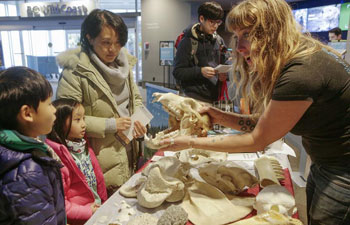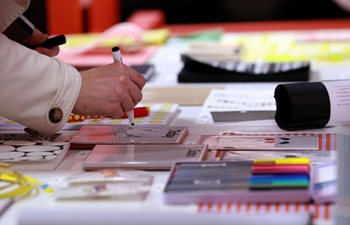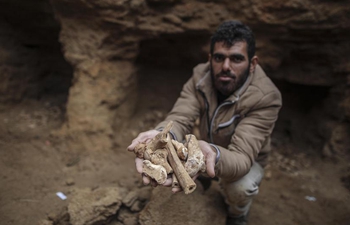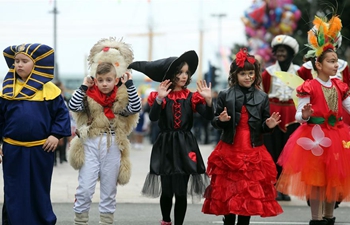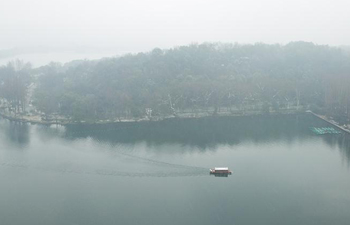by Keren Setton
JERUSALEM, Jan. 28 (Xinhua) -- It is everyone's worst nightmare, a terror attack in a stadium during a high-profile soccer game.
It was also a reality in Paris in November 2015, leaving over 100 casualties at a multiple scene attack by the hands of ISIS perpetrators.
Earlier this month, in central Israel, first responders and military forces exercised that exact situation.
For a few hours, the Moshava stadium in Petah Tikva looked and sounded like a war zone.
"When you want to learn how to deal in these situations, you need to make this real situation in the area. The world gives me ideas," said Deputy Commander of the Dan District at the Home Front Command Unit of the Israeli Defense Forces (IDF), Lt. Cl. Yehonatan Raz.
The drill was the culmination of a bi-annual international conference held by the Israeli military home front command and the country's health ministry.
35 countries participated in the conference with 1,000 doctors, scientists and rescue service members attending. Among the countries represented were China, the U.S., Germany and Spain.
The Israeli forces spent two months preparing for the exercise.
During the drill, two helicopters were constantly in the air, one was a police one and the other one a medical evacuation helicopter for the severely injured in need of a speedy departure from the scene.
One of the stands of the stadium collapsed as part of the drill, leading to hundreds of casualties.
They were then triaged by medical personnel on the field and transported to a nearby hospital whose staff was also part of the important exercise.
Sirens were wailing around Petah Tikva, the city where the exercise was held. Residents were warned ahead of time, so that they knew the increased sounds of emergency vehicles were not a result of a real crisis.
The attack which began during the soccer game had men acting as terrorists storming into the field and starting to shoot at players on the stadium field and at the audience.
At the same time, there was also a drill of an attack at a nearby market.
It was almost an exact simulation of the Paris attacks, in which there were several scenes that demanded an immediate and coordinated response.
"The most important thing for us here is to demonstrate the integration and synchronization of the work between all these forces," said Lt. Cl. Sharon Itach, Commander of the Kedem Battalion at the IDF Home Front Command Unit.
"These are different bodies with different training but with one goal and with one task," Lt. Cl. Kedem told Xinhua.
Coordination between the units, who do not work together on a daily basis, is a critical element in the response to such attacks.
Much of the drill was conducted in English to allow the spectators from the foreign delegations to understand what was happening.
Israel, which has a lot of experience with large scale terror attacks, is often a model for agencies around the world. The overlap between military and civilian forces in Israel in such occurrences is more frequent than in other areas.
Military service in Israel is compulsory for men and women who reach the age of 18, meaning there are a lot of soldiers in crowded areas at any given time.
In recent years, there has been a decline in mass casualty events in Israel and an increase in attacks on individuals or small groups.
Still, the forces maintain a high level or preparedness for large-scale attacks.
It was the 5th International Conference on Preparedness & Response to Emergencies (IPRED) held by the Israeli Health Ministry and the IDF.
The main topics on the agenda were urban terrorism, prolonged conflicts, chemical and biological warfare and response to natural disasters.





